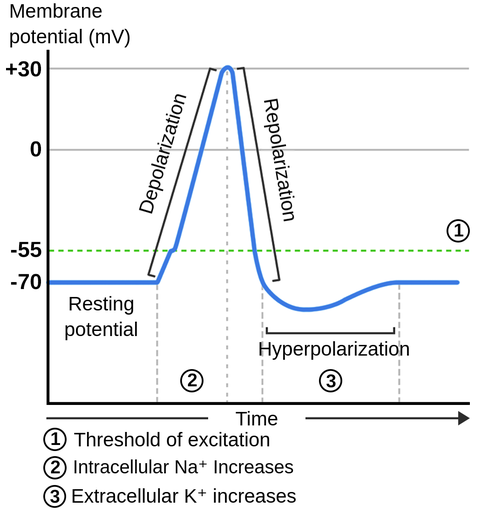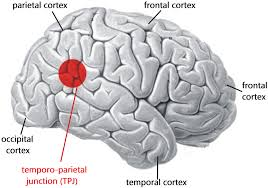How Do Neurons Communicate? by Maya A.
- Annie Z
- Oct 8, 2024
- 3 min read
Have you ever wondered how your brain processes everything so quickly? Whether you’re thinking about what’s for dinner or reading through this article, it all comes down to how neurons send signals to one another. Before diving into this fascinating process, we need to go over some basic terms:
Ion - Ions are charged particles that can be either positively charged or negatively charged.
Membrane potential - The electrical difference between the inside and outside of the cell. The resting membrane's potential is -70 mV, meaning that the inside of the cell is 70 mV more negative than the outside. This difference arises from the concentrations of ions inside and outside the cell.
Synapse – The junction between two neurons through which they communicate.
Now that we have gone over some terms, let’s take a look at the basic structure of a neuron.
The neuron has 3 main parts: The axon, the soma (cell body) and the dendrites.
Dendrites receive signals from neighboring neurons.
The Soma (Cell Body) processes those signals.
The Axon is the pathway that carries the signal to the next neuron. At the end of the axon, there are axon terminals, where the neuron gets ready to hand off the signal.
Action potential
When a neuron in a chain sends a signal, it releases chemical messengers called neurotransmitters. These neurotransmitters cross the synapse to deliver the signal to the next neuron in the chain. Neurotransmitters can either be excitatory or inhibitory. Inhibitory neurotransmitters lower the membrane potential and excitatory neurons enhance it.
The signals triggered by the release of neurotransmitters are picked up by the dendrites. In the process of summation, inhibitory signal and excitatory signal can cancel each other, but several excitatory or inhibitory signals can also add up with each other.
If the excitatory response pushes the membrane potential above -55 mV, an action potential is initiated, leading to the firing of a neuron.
The first stage of an action potential is depolarization, which is the enhancement of the membrane potential above the threshold. The change in the voltage opens small gates on the membrane called ion channels. The gates that open in this stage are voltage-gated sodium channels. The open ion channels let in positively charged sodium ions, which push the membrane potential way above zero. This phase of high positive charge is the overshoot phase. After the overshoot, in a phase called repolarization, the sodium voltage gated channels close and voltage-gated potassium channels open, letting in negatively charged potassium ions.
Repolarization is always followed by hyperpolarization, a state in which the membrane potential is more negative than -70 mV. But shortly after that the membrane returns to its resting state due to the help of leak ion channels.
After this signal travels along an axon and reaches the axon terminals, the neurotransmitters are then released into the synapse, passing on the signal to the next neuron in the chain.
Neurons fire in milliseconds, allowing you to react almost instantly to the world around you. From simple reflexes to complex thoughts, it’s all thanks to this fascinating system of electrical signals and neurotransmitters working behind the scenes.
References
1. Vaskovic, J. (2023). Action potential. Ken Hub. https://www.kenhub.com/en/library/physiology/action-potential
2. Queensland Brain Institute. (Nd). Action potentials and synapses. The University of Queensland https://qbi.uq.edu.au/brain-basics/brain/brain-physiology/action-potentials-and-synapses
Images from https://medium.datadriveninvestor.com/introduction-to-neural-networks-a0fe9ec0a947 and https://theory.labster.com/action_potential/






Comments